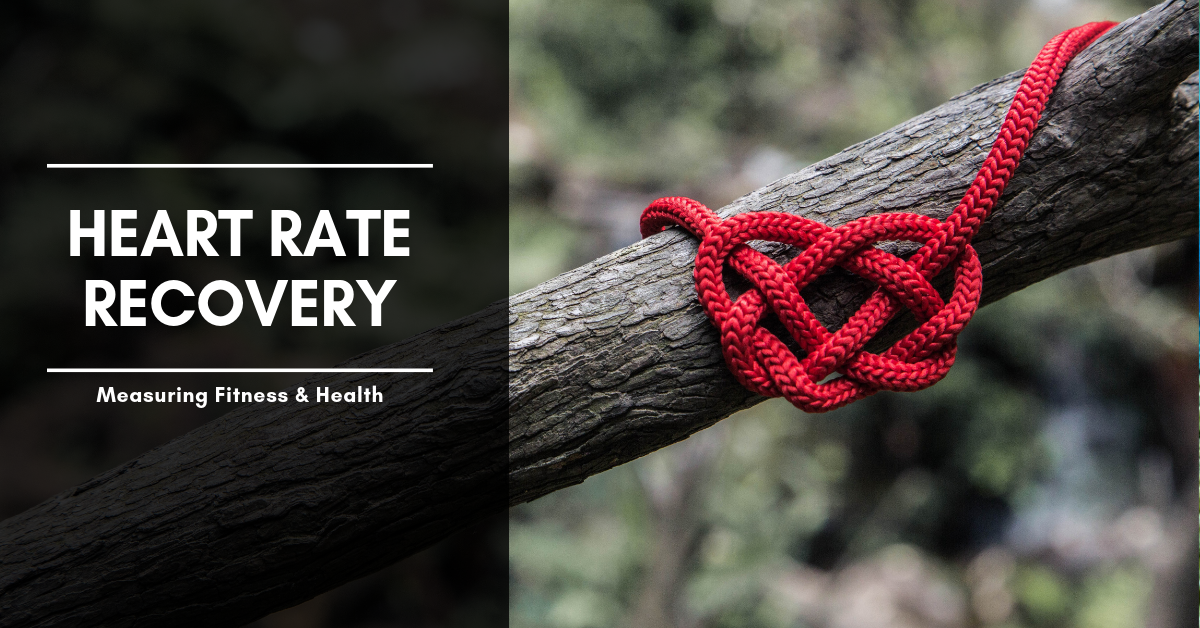A Quick and Easy Way to Measure Your General Fitness

Most people are familiar with heart rate (sometimes called your pulse) — the measure of how fast your heart is beating.
For a typical adult:
A normal heart rate is between 60 and 100 beats per minute.
Throughout the day, your heart rate is changing for all sorts of reasons:
During exercise…..
A stressful presentation…..
While taking a nap…..
After taking certain medications…..
After drinking a cup of coffee.
What many people might not be familiar with is just how much information about health and fitness your heart rate can tell you.
One incredibly useful and easy way to measure your general fitness and heart health is:
Your heart rate recovery.
Heart rate recovery is a measure of how quickly your heart rate goes down after intense exercise, usually measured at one-, two-, or three- minutes. To get a good measure of heart rate recovery, people go through something called a peak exercise test, often on a treadmill or stationary bike, where they exercise as hard and as fast as they can until they’re too tired to push any further. The heart rate is then logged at the end of the test, and after one-, two-, and three-minutes of rest.
Interested in your heart rate recovery but don’t feel like measuring it the old fashioned way by feeling your pulse at your wrist or your neck after busting your butt?
Me neither.
Fortunately, a lot of smartwatches like the Apple Watch and the various offerings from Garmin will automatically measure your heart rate recovery for you. If you use a heart rate monitor, popular apps like Strava can also provide measures of your heart rate recovery.
It is important to note that performing a peak exercise test to measure your heart rate recovery is not safe for everyone! If you are concerned about getting started with an exercise program, aren’t showing a heart rate recovery you are happy with, or just want some help getting healthier and stronger — contact us!
But how do we know what a good heart rate recovery is? Fortunately, there is a lot of solid science to give us an idea.
A research article from the New England Journal of Medicine found that:
-
A heart rate recovery of 15-20 beats per minute after one minute of rest was considered about average for heart health and anything faster than that was considered to be good heart health.
A 2017 article in the Journal of the American Heart Association pooled together a ton of studies on heart rate recovery (this is called a meta-analysis) and found a strong enough relationship between heart rate recovery and cardiovascular health to recommend it as something that should be looked at when gauging risk of things like heart disease.
Heart rate recovery can also be a pretty good measure of fitness and performance!
A 2017 study of elite athletes found:
-
The average one-minute heart rate recovery to be: 23 beats per minute
-
Two-minute heart rate recovery to be: 58 beats per minute
-
Three-minute heart rate recovery to be: 82 beats per minute.
For those of us not considered elite athletes (like me 👋🏻), a 2014 study that looked at physically active men and found:
-
The average one-minute heart rate recovery to be: 15 beats per minute
-
Three-minute heart rate recovery to be: 64 beats per minute.
In general, it’s a good idea to think the faster the heart rate recovery, the better the fitness.
And just like heart rate can be affected by many things, hour to hour, day to day — so too can heart rate recovery. One measurement can be helpful, but it’s multiple measurements over time that give the best info.
Heart rate recovery is one of the many things Karen and I can take a look at when working with you to ensure you’re on the right track to achieve your recovery and fitness goals.
-
Do you have an injury that has kept you from being as fit as you’d like?
-
Are you someone who has dealt with medical issues and want to make sure you’re doing everything you can to be as healthy as you can be?
-
Or are you just looking to improve your strength and conditioning?
We can help.



